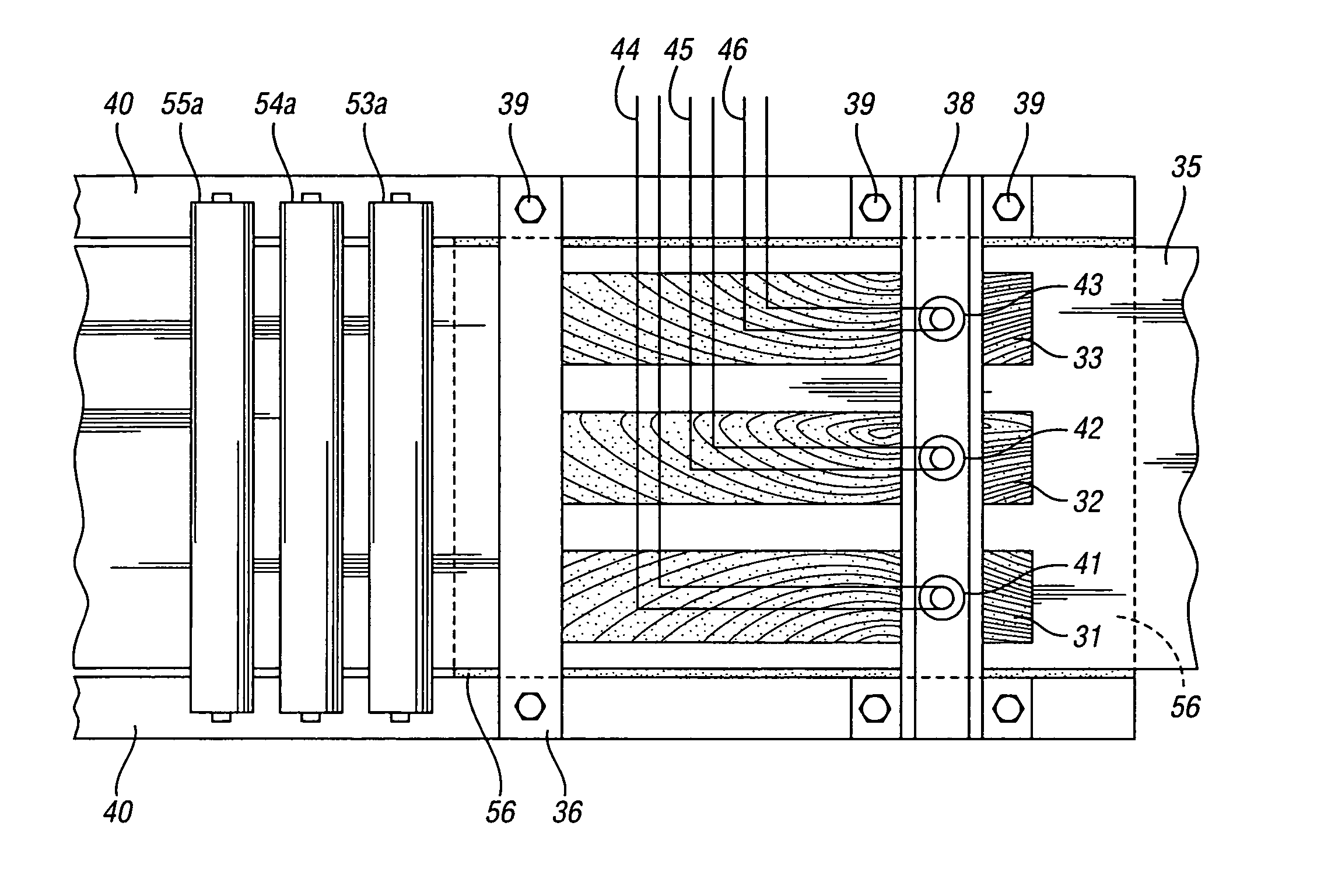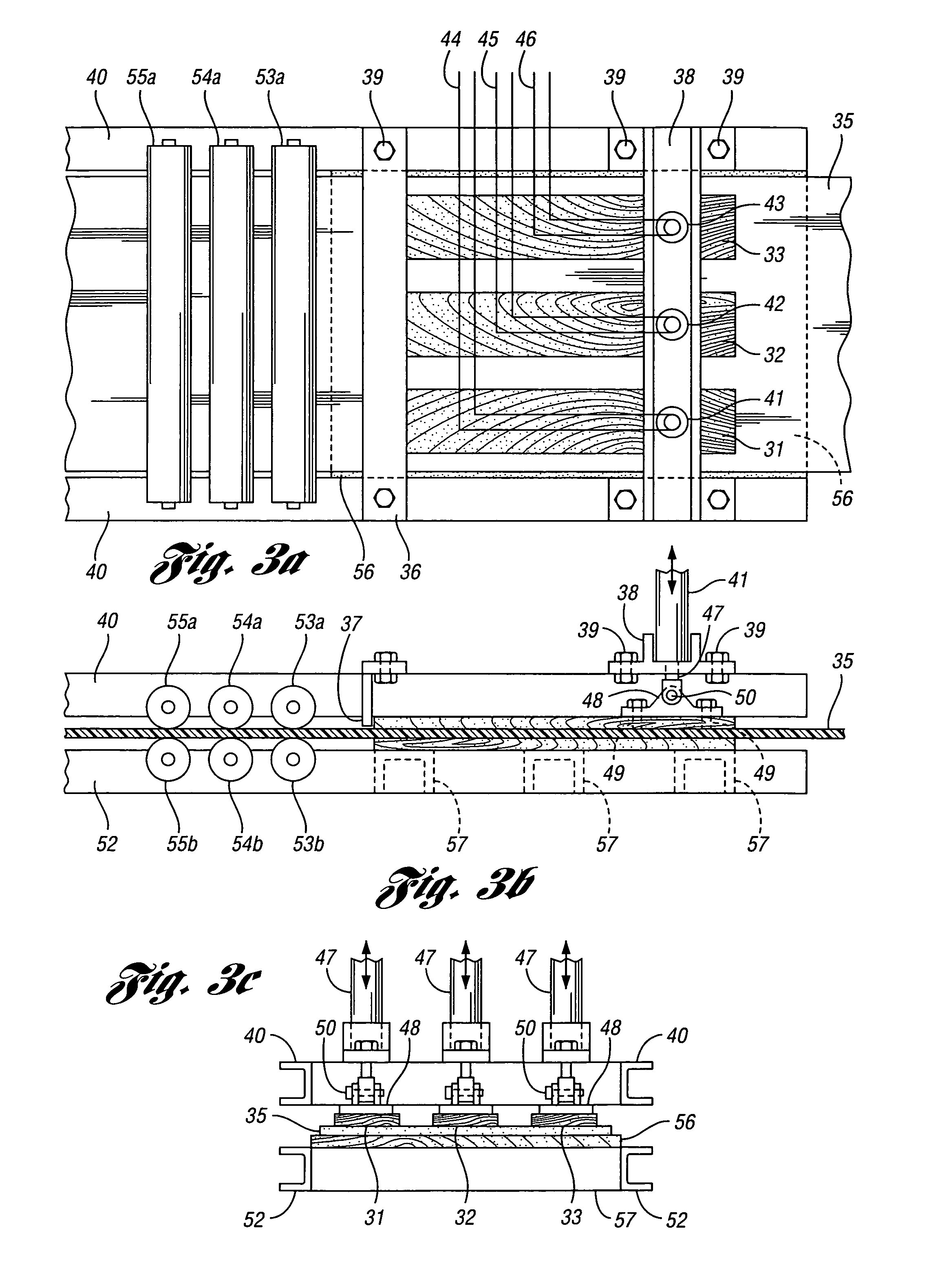Production of UHMWPE sheet materials
a technology of uhmwpe and sheet materials, which is applied in the field of production of uhmwpe sheet materials, can solve the problems of large processing problems, easy abraded, and largely unsuccessful attempts to melt extrude uhmwpe, and achieve the effect of minimizing side to side movement and improving uniformity of sheets
- Summary
- Abstract
- Description
- Claims
- Application Information
AI Technical Summary
Benefits of technology
Problems solved by technology
Method used
Image
Examples
example
[0080]A panel of UHMWPE of a nominal ⅜ inch (9.525 mm) thickness and a width of about 1.2 m is ram extruded from a die having a heated zone maintained at about 420° F. (215° C.) followed, in the machine direction, by a plurality of cooling zones, such that a flat sheet having a thickness tolerance of ±0.030 inch can be produced during stable operation. The sheet exits the die at a temperature of about 150° F. (65.6° C.), below the crystalline melt temperature.
[0081]The start-up temperatures are at a target temperature of 345° F. (174° C.). The hopper is filled with UHMWPE resin powder having a number average molecular weight of about 4×106 Da, and purged with nitrogen. The ram, having a thrust of 2 inches (5 cm) is cycled at the required interval. As the material exits the die, it begins to warp and deform. Concurrently, it also bows hard to the left. To counter this distortion, a back pressure fixture is applied to the panel to regain and maintain control.
[0082]The fixture consists...
PUM
| Property | Measurement | Unit |
|---|---|---|
| width | aaaaa | aaaaa |
| width | aaaaa | aaaaa |
| number average molecular weights | aaaaa | aaaaa |
Abstract
Description
Claims
Application Information
 Login to View More
Login to View More - R&D
- Intellectual Property
- Life Sciences
- Materials
- Tech Scout
- Unparalleled Data Quality
- Higher Quality Content
- 60% Fewer Hallucinations
Browse by: Latest US Patents, China's latest patents, Technical Efficacy Thesaurus, Application Domain, Technology Topic, Popular Technical Reports.
© 2025 PatSnap. All rights reserved.Legal|Privacy policy|Modern Slavery Act Transparency Statement|Sitemap|About US| Contact US: help@patsnap.com



